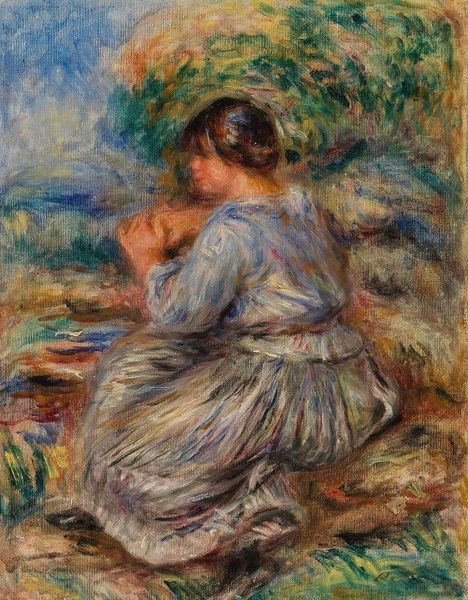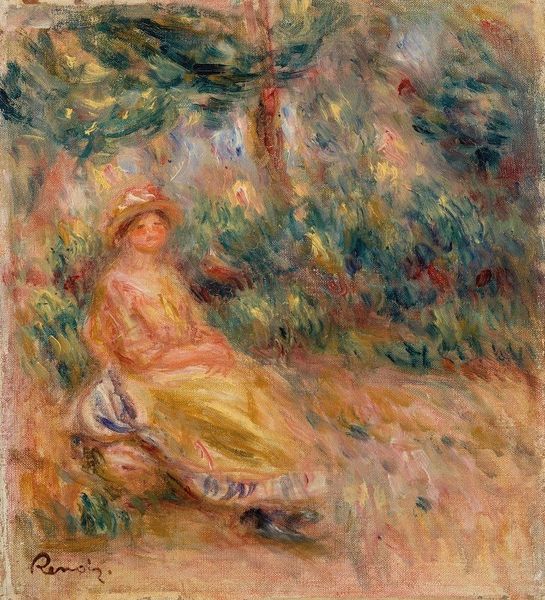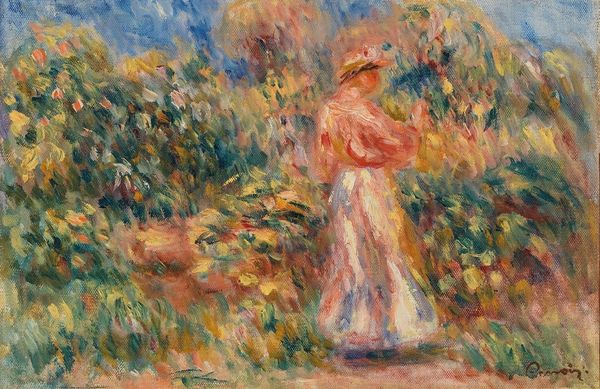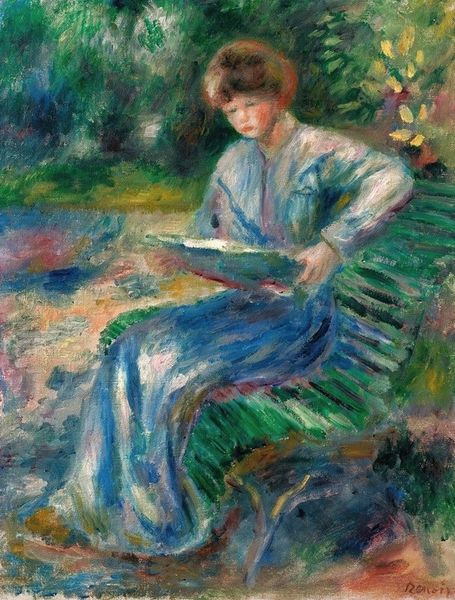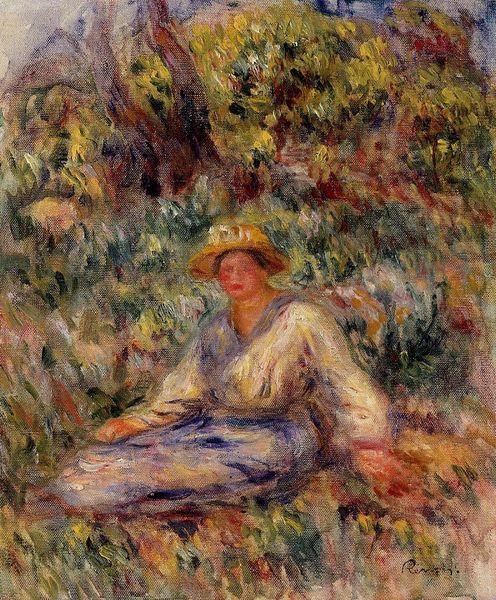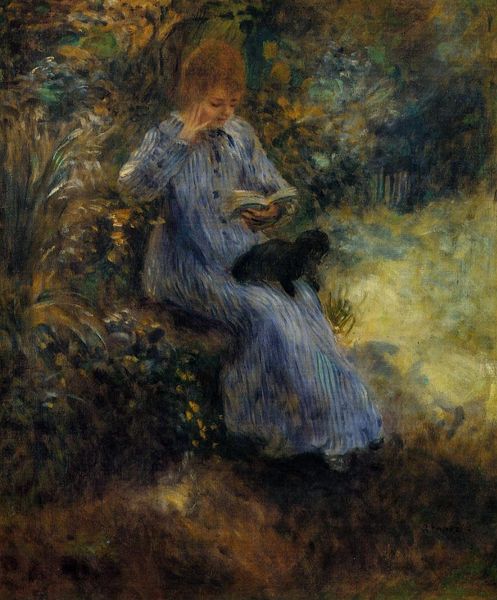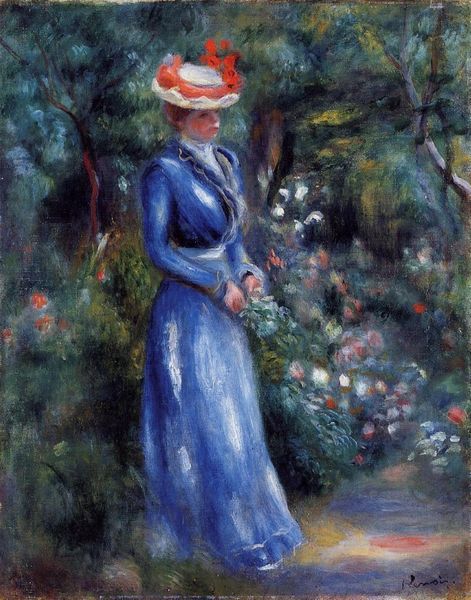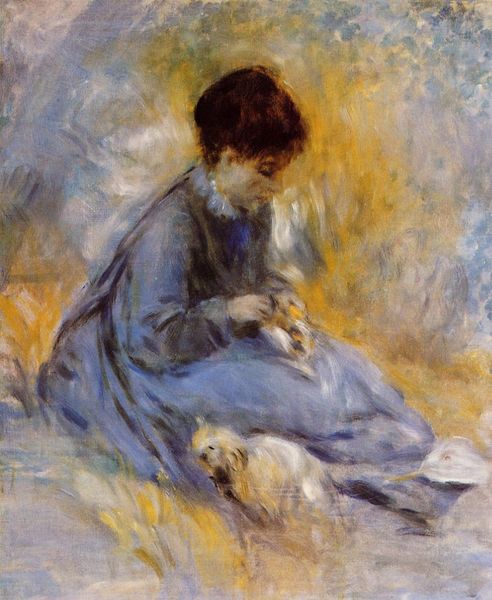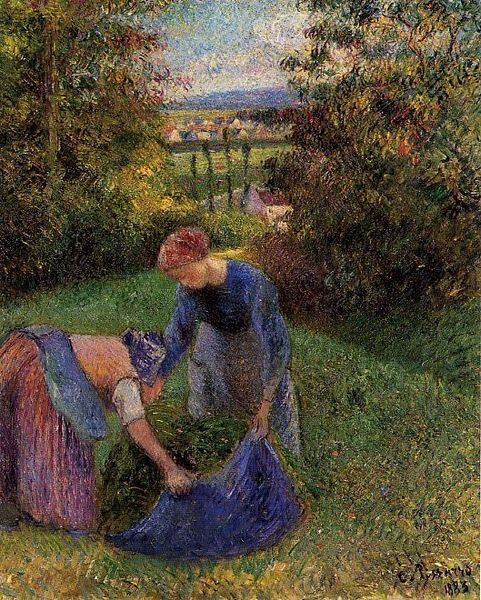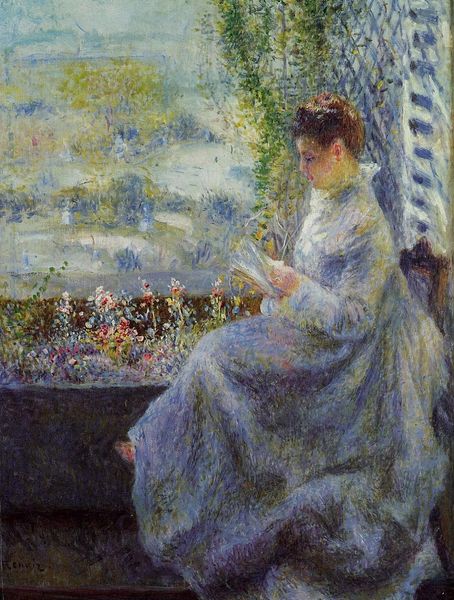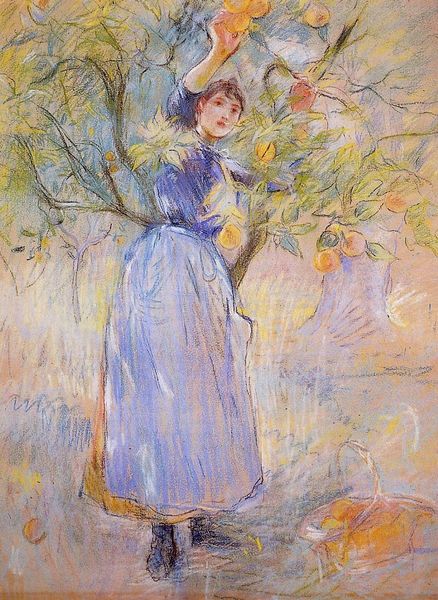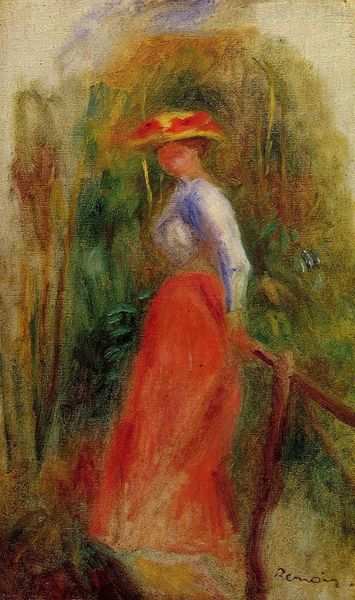
Copyright: Public domain
Pierre-Auguste Renoir created this unnamed oil painting of a woman embroidering in a garden, sometime in his lifetime, which ended in 1919. Notice how the composition is unified by soft brushstrokes and harmonious colors. The woman is centrally placed, yet she is integrated into the surrounding landscape through a consistent application of textured paint that blurs the boundary between figure and background. Renoir's use of impressionistic techniques to capture the fleeting effects of light and color is evident in the broken brushstrokes that evoke the play of sunlight through foliage. The semiotic implications of these techniques extend to the very definition of form. By dissolving the edges of objects and figures, Renoir challenges our perception of fixed and stable identities, suggesting instead a world in constant flux. The work becomes not just a representation of a scene, but also an exploration of how we perceive and construct our reality. Ultimately, Renoir invites us to consider how the act of seeing is always an act of interpretation, shaped by our own subjective experiences and cultural codes.
Comments
No comments
Be the first to comment and join the conversation on the ultimate creative platform.
